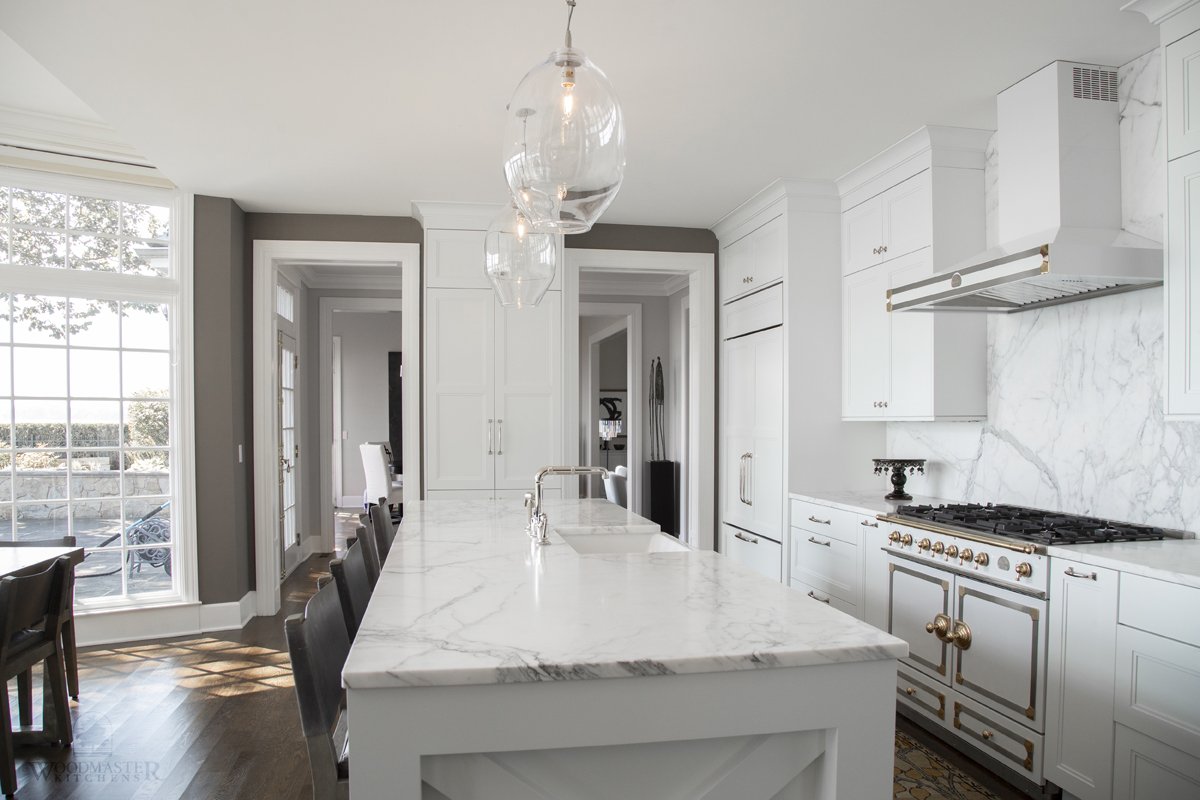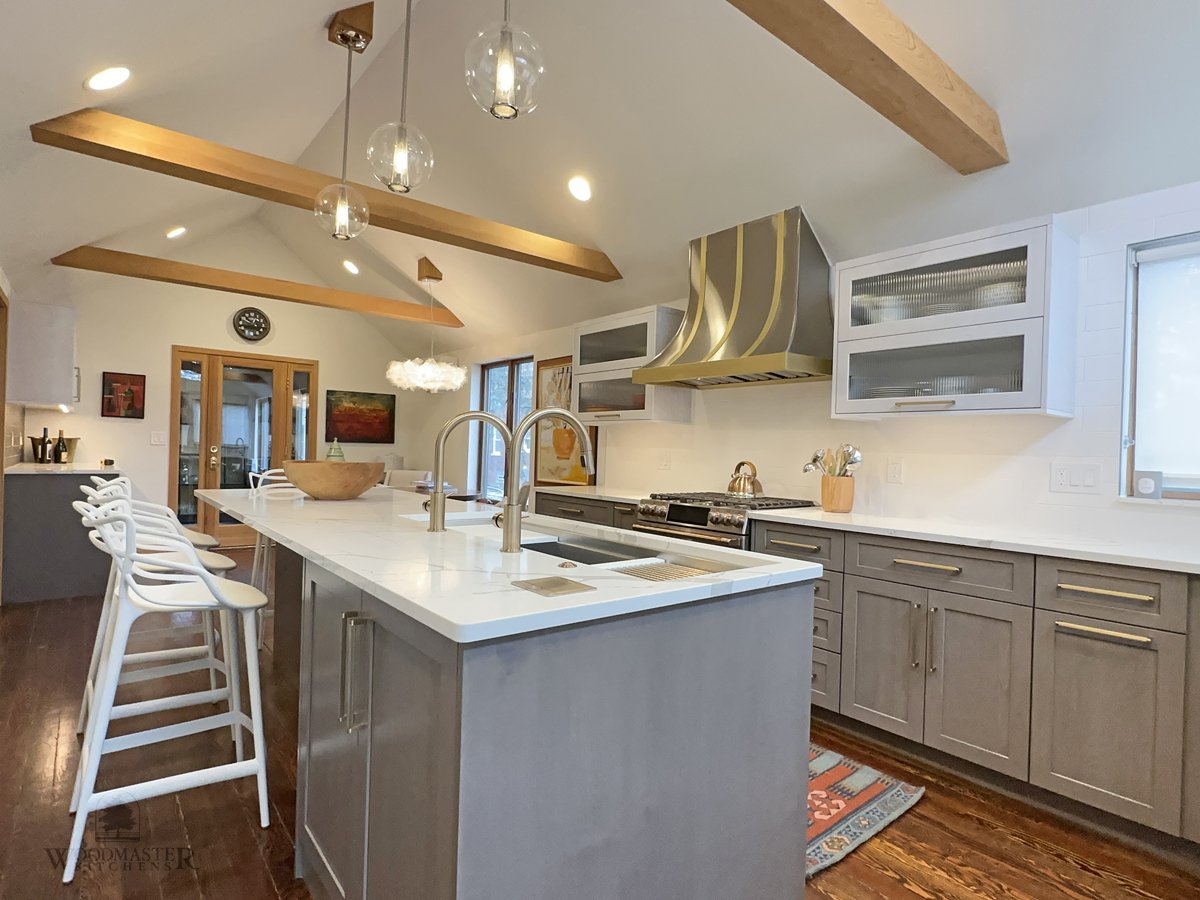Maintaining Your New Kitchen and Bath Countertops
If you are undertaking a kitchen remodel or new bathroom design, or even if you recently completed a home remodel, you know how exciting it is to step into your new space. A remodel breathes new life into your home, bringing your design vision to life to enhance your home’s style and functionality.
Once the remodeling project is completed, the dust is cleared up, and your remodeling team has left, you can begin to fully enjoy your new space. Your top priority may be to try out your new shower or bake something special in your new kitchen design. It’s also important to establish a cleaning and maintenance routine from the moment your remodel is finished to protect your investment in your home and make sure you can enjoy it for years to come.
Get advice from your remodeling professionals, review the care and maintenance information for your new products, and set out a plan for how you will keep your home looking brand new. At Woodmaster Kitchens, we know how essential it is to understand your new surfaces and products and to know exactly how to maintain them. Following on from our November blog on the care and maintenance of wood surfaces, here is our guide to caring for your new kitchen and bath design countertops.
Plastic Laminate
High-pressure laminate finishes can be effectively cleaned using mild soap or detergent with a clean, damp cloth or sponge. To avoid causing a gloss burnish that may make the surface appear dull, avoid aggressive rubbing or abrasive cleaners in one area. You should also stay away from using abrasive cleaners on laminates with a mirror or gloss finish.
The following cleaners and waxes are recommended for normal cleaning: Lestoil, Countertop Magic, Pine-sol, Panel Life, Top Job, Favor, Fantastik, Pledge, Joy, Mica-Luster, and Soft Scrub. Abrasive cleaners and powders and metal or abrasive-coated scouring pads should be avoided on conventional laminate, as they can permanently scratch and dull the surface, which then makes it more susceptible to staining.
To prevent permanent damage to laminate surfaces, it is important to avoid placing hot objects directly on the surface. You should also avoid operating heated appliances such as irons or toasters directly on a laminate countertop. Burning cigarettes should also not be allowed to remain in contact with the surface as they can damage laminate countertops.
While most laminates resist scratching, it is important to exercise caution when using heavy earthenware and other ceramic products with rough bottoms. These items can cause deep scratches and excessive wear and tear on laminate countertops. Cutting directly on the surface should be avoided and care taken to prevent heavy impact from falling objects. Even normal use of laminate countertops can result in accidental damage, so taking precautions can extend the life of your surfaces.
Always rinse a laminate surface after cleaning to prevent damage, even if only a small amount of cleaning solution remains on the surface. A dry residue may not be immediately visible but moisture from drinks or glassware can reactivate it, resulting in permanently etched scars or stains.
Quartz
Quartz is one of the most durable and easy-to-maintain surfaces for kitchen or bath designs, and therefore an ideal countertop for a busy home. Although it is a tough surface, it is still important to follow a careful cleaning and maintenance routine to ensure your quartz surface stays looking good as new.
For routine maintenance, you can use a mild detergent and a damp, ideally completely clean, cloth or sponge to clean up most spills and dirt. Avoid using excessive amounts of soap or cleaner as it can cause streaks and leave behind a filmy residue. Rinse the surface thoroughly and finally dry it with a soft cloth or towel.
If you need to remove stubborn materials like gum, food, or nail polish, begin by carefully scraping away any excess with a plastic putty knife. Then, use a damp cloth to clean the area and remove any remaining marks or dirt. Avoid using abrasive pads or products as they can damage the finish and sheen of your countertops. Remember that honed or textured finishes require more frequent cleaning than polished finishes.
When selecting cleaning products, choose ones with a pH range between 5-8 as products outside of this range may damage the surface. Be sure to avoid exposure to chemicals with a pH level outside this range such as floor strippers, paint removers, toilet bowl cleaners, and battery acids. If your countertops are exposed to any of these products, make sure you rinse them immediately with water to neutralize the effect. Do not apply any sealers, penetrants, or topical treatments to your countertops as they can cause the gloss to appear inconsistent or dull.
While quartz tops are generally more heat resistant than other stones like granite and marble, any stone surface can potentially be damaged by sudden temperature changes. This is especially true near the edges where extra care should be taken. Always avoid placing hot cookware directly on your quartz surfaces.
Quartz tops are resistant to scratches, cracks, and stains. However, excessive force or pressure can still damage the surface. Although they are highly scratch-resistant, avoid using sharp objects directly on the surface, and always use cutting boards to prevent any damage to your countertops.
Granite
Granite is a hard-wearing, beautiful, and classic material that enhances any kitchen design or bath remodel. While it is so tough it could dull your knives if you consistently cut directly on its surface, it is still a natural stone that must be carefully maintained over time.
To keep your granite countertops looking their best, start with everyday care. A damp cloth or sponge and water will do the trick for most basic spills and dirt. If you need to clean your granite surfaces more thoroughly, mix a few drops of neutral cleaner or a mild liquid dishwashing detergent with warm water. Use a clean rag to wipe down the surface. Be careful not to use too much cleaner or soap, as any residue can leave a film and cause streaks.
If you prefer to use disinfectant cleaners, look for one of the newer cleaning products specifically formulated for granite countertops. Be sure to avoid using any products that contain lemon, vinegar, or other acids, as these can etch the surface and do permanent damage. After washing your granite with a soap solution, be sure to rinse it thoroughly and dry it with a soft cloth. Stay away from scouring powders or creams and be careful not to set or slide metal objects on your granite countertops.
When it comes to removing stains, start by testing any cleaning methods on a small, discreet area of your countertop to make sure they won't cause any damage or discoloration. For most stains, you can make a paste by mixing flour, dishwashing liquid, and water, then apply it to the stain, cover it with plastic wrap, and let it sit overnight. In the morning, use a wooden utensil to scrape away the paste and rinse the surface.
For grease, oil, or milk stains, try adding hydrogen peroxide to the paste instead of dishwashing liquid, or alternatively use ammonia. For organic stains from coffee, tea, or fruit, you can try mixing 12% hydrogen peroxide with a few drops of ammonia.
Finally, keep in mind that granite countertops should be resealed every two to three years to maintain the integrity of their surface. Talk to your installer about when to do this and be sure to use a non-toxic sealer if this is a surface used for food preparation. If you encounter a cleaning problem you can't handle on your own, don't hesitate to call in a professional.
Marble
Marble is a beautiful, classic, and durable surface that is suitable for a kitchen design. It is especially ideal for baking, as marble stays cool and makes the perfect surface for rolling out dough. Marble is susceptible to moisture and staining, and so requires specialized care and maintenance. Carefully consider the pros and cons of this stunning surface before deciding if it is right for your home.
Marble is especially susceptible to acid-based food and cleaning products. It can also be damaged by bleach and abrasive cleaning tools. Practice careful preventative measures to avoid staining and damage and use simple cleaning products and soft cloths to keep your marble surface looking good as new.
Here are a few key steps to follow in regularly maintaining and cleaning your marble countertop:
Wipe up spills immediately, with special attention to acidic splashes, which ideally should be avoided altogether.
Marble can tolerate some heat, but it’s best to use a trivet, placemat, or coaster under hot items to avoid any damage.
Use a microfiber cloth to dust the countertop.
For regular cleaning, use warm water or else a small amount of dish soap diluted with warm water, spray the surface, and wipe it with a soft cloth. Alternatively, use a pH-neutral cleaner on marble surfaces.
Wipe the cleaned surface until all suds are gone. Then use a dry cloth to completely dry the countertop, as water can mark marble.
You can also occasionally use baking soda and a damp cloth to polish marble surfaces, as required. Since marble is a porous surface, it should be regularly sealed to avoid it getting stained or damaged. Follow the manufacturer’s guidelines regarding when to reseal your marble and what products to use.
Wood
Wood is a natural material that beautifully accents cabinetry and fits almost any design aesthetic. Whether you are going for a live edge, reclaimed wood, or butcherblock there is a wood countertop to enhance almost any design.
Wood is a dynamic material that responds to fluctuations in humidity. Maintaining a relative humidity of approximately 50% is important for wood, which is the typical humidity level in a room with a temperature of 68˚F. As wood absorbs and releases moisture, it can contract or expand. The amount of moisture in the air, both indoors and outdoors, can vary depending on the season, and it helps to understand your own conditions to determine if wood fits your design goals and how to maintain it.
Woodmaster supplies countertops with a factory-applied oil finish. To preserve this finish, it's essential to oil them periodically to reduce staining and make the wood less absorbent. If the wood top appears white, it's a sign that it needs re-oiling. While mineral oil is commonly suggested, it can "gunk up" or rise to the surface over time. Linseed oil is not recommended due to its toxicity, and food-grade oils, like cooking oil, are prone to rancidity.
One excellent choice for oiling wood tops is FDA-approved tung oil, which can be applied easily, leaves no residue, and has no odor when rubbed on in several layers. For tung oil-finished products, Mohawk Finishing Products is a reliable source. Experts recommend scrubbing the wood top periodically with coarse salt and then re-oiling it. If severe staining occurs, fine sandpaper or steel wool can be used to remove it.
Care and Maintenance Keep Your Countertops Looking Good as New!
After careful planning and selection of products for your new kitchen or bathroom design, it pays to establish a care and maintenance routine from day one. Learn about your new surfaces and get advice from your kitchen and bath design expert. Then practice responsible cleaning and maintenance to keep your home looking good as new for years to come.







